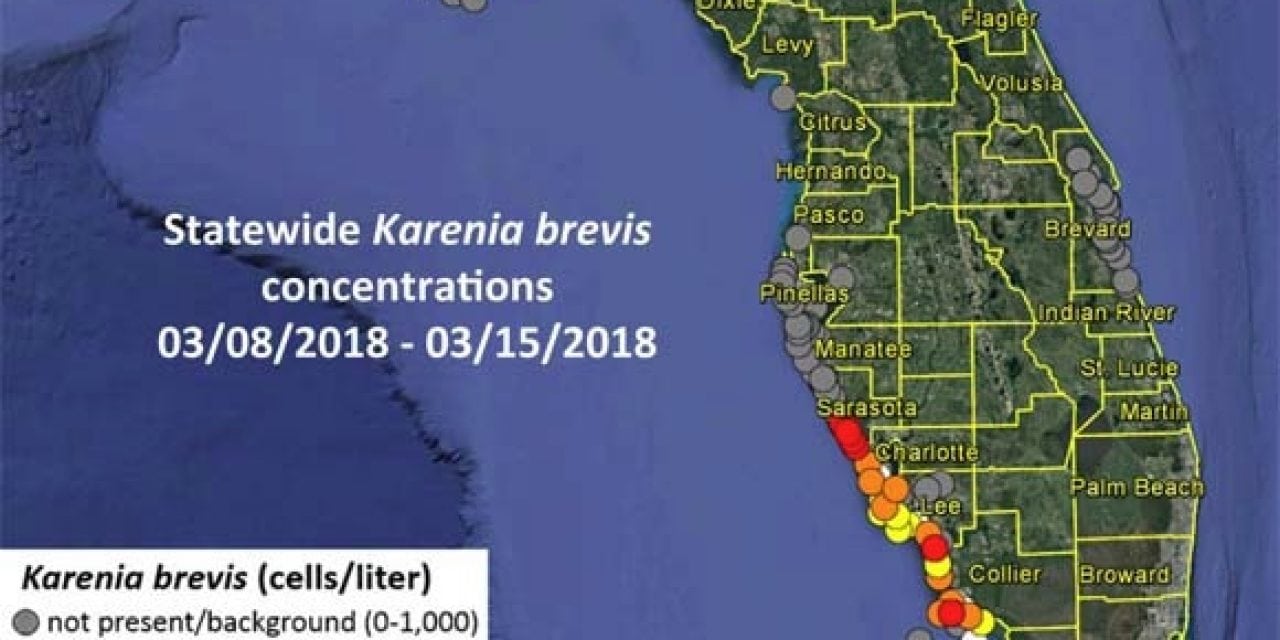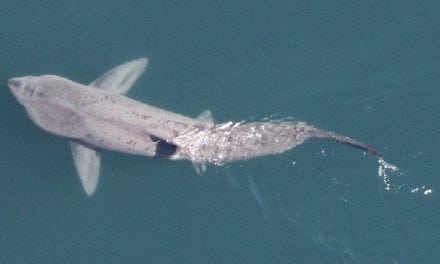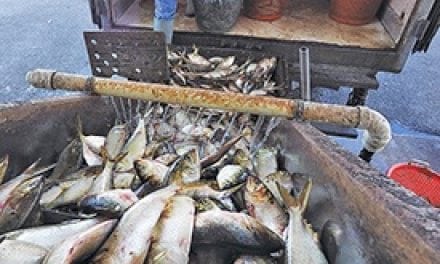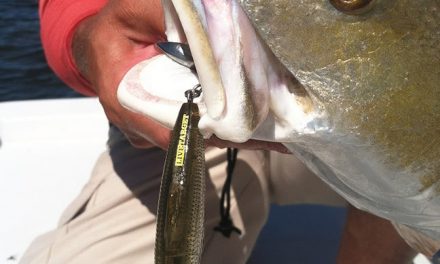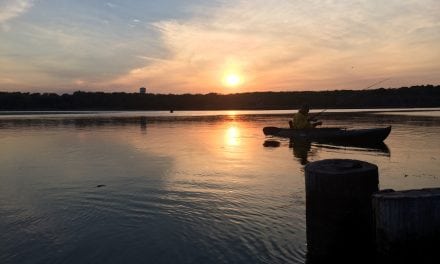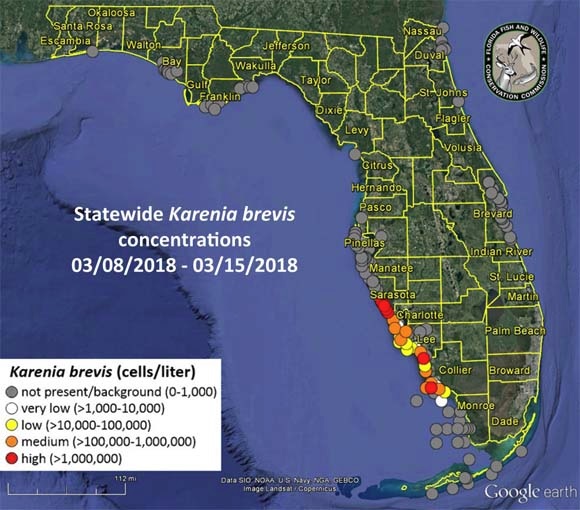 A patchy bloom of the Florida red tide organism, Karenia brevis, persists in Southwest Florida. In Southwest Florida over the past week, K. brevis was observed at background concentrations in one sample collected from Pinellas County, background concentrations in one sample collected offshore of Hillsborough County, background to medium concentrations in eleven samples collected from Sarasota County, background to low concentrations in six samples collected from Charlotte County, background to medium concentrations in fifteen samples collected from Lee County, and background to very low concentrations in three samples collected from Collier County.
A patchy bloom of the Florida red tide organism, Karenia brevis, persists in Southwest Florida. In Southwest Florida over the past week, K. brevis was observed at background concentrations in one sample collected from Pinellas County, background concentrations in one sample collected offshore of Hillsborough County, background to medium concentrations in eleven samples collected from Sarasota County, background to low concentrations in six samples collected from Charlotte County, background to medium concentrations in fifteen samples collected from Lee County, and background to very low concentrations in three samples collected from Collier County.
Additional samples collected throughout Florida over the past week did not contain K. brevis.
Numerous fish kill reports were received for Lee and Collier counties over the past week. Areas impacted in Lee County include Big Carlos Pass, Big Hickory Island, Bonita Beach, Captiva Island, Carlos Point, Cayo Costa, Estero Island, Fort Myers Beach, Little Hickory Island, Lovers Key State Park, Pine Island Sound, San Carlos Bay, Sanibel, and offshore of St. James City. Areas impacted in Collier County include Barefoot Beach, Delnor-Wiggins Park, Vanderbilt Beach, and Wiggins Pass. Respiratory irritation was reported in Sarasota County at Manasota (3/1), Nokomis (3/1 – 3/2), Venice (3/2), and Venice North Jetty (2/28 – 3/2) beaches; in Lee County at Bonita (3/2), Bowman’s (2/25), Captiva (2/28, 3/2), Causeway Islands (2/26), Gasparilla Island State Park South Lighthouse (3/2), Lovers Key State Park (2/26 – 2/27, 3/2), and Lynn Hall (2/26) beaches; and in Collier County at Barefoot (2/27, 3/1, 3/2) and Delnor-Wiggins State Park (3/1, 3/2) beaches. Forecasts by the USF-FWC Collaboration for Prediction of Red Tides for Pinellas to Monroe counties predict southern, offshore transport of surface waters and southern, onshore transport of subsurface waters over the next three days.
This information, including maps and reports with additional details, is also available on the FWRI Red Tide website. The website also provides links to additional information related to the topic of Florida red tide including satellite imagery, experimental red tide forecasts, shellfish harvesting areas, the FWC Fish Kill Hotline, the Florida Poison Information Center (to report human health effects related to exposure to red tide), and other wildlife related hotlines.
To learn more about various organisms that have been known to cause algal blooms in Florida waters, see the FWRI Red Tide Flickr page. Archived status maps can also be found on Flickr.
The FWRI HAB group in conjunction with Mote Marine Laboratory now have a Facebook page. Please like our page and learn interesting facts concerning red tide and other harmful algal blooms in Florida.
The post Red Tide Getting Worse appeared first on ODU Magazine-North America’s #1 Digital Fishing Magazine.

